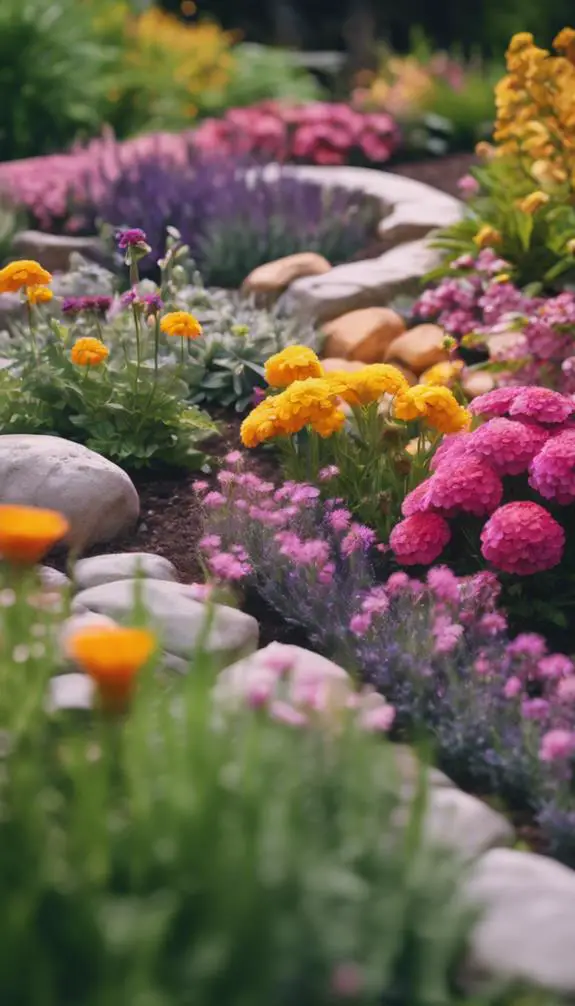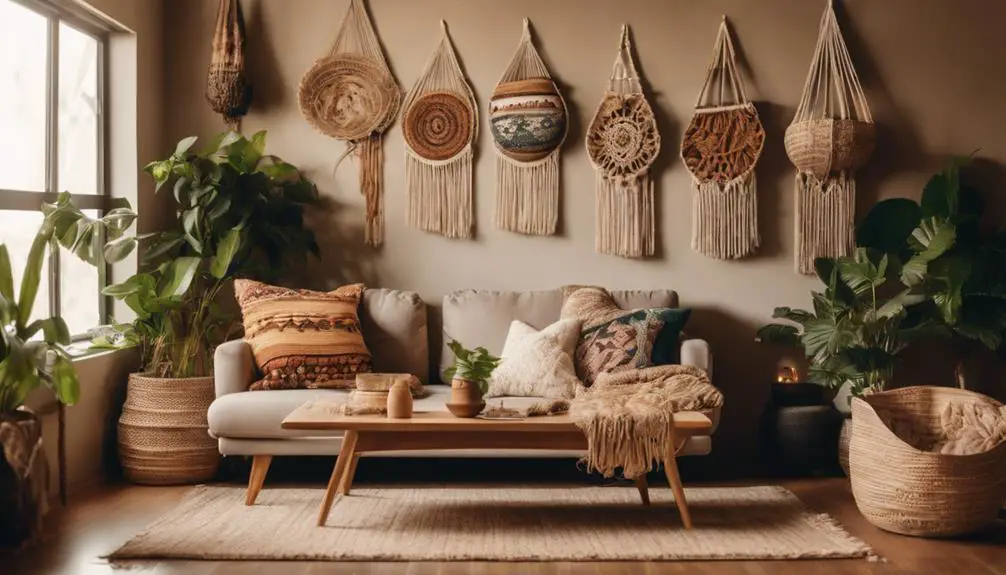As you stand in your front yard, you envision a beautiful landscape that welcomes you home and makes a great first impression on guests. But where do you start? You know you need to ponder the lay of the land, sunlight, and soil moisture levels, but how do these factors impact your plant choices and overall design? By understanding your yard's unique conditions, you'll be able to create a landscape that not only looks amazing but also thrives in its environment. Now, it's time to take the next step and explore the essential elements that will bring your vision to life.
Assessing Your Yard's Conditions

As you step into your yard, take stock of its conditions, surveying the lay of the land, the amount of sunlight it receives, and the soil's moisture levels.
This vital step in yard mapping and site analysis helps you understand your yard's unique characteristics, identifying opportunities and challenges that will inform your landscape design.
Take note of the yard's topography, including slopes, drainage patterns, and any existing features like trees, gardens, or hardscapes.
Observe how sunlight filters through the space, marking areas that receive full sun, partial shade, or full shade.
Test the soil's pH levels and moisture content to determine its suitability for different plant species.
By gathering this data, you'll create a detailed picture of your yard's conditions, enabling you to make informed decisions about your landscape design.
This site analysis will serve as the foundation for your front yard landscape, ensuring that your final design is functional, sustainable, and aesthetically pleasing.
Defining Your Landscape Style
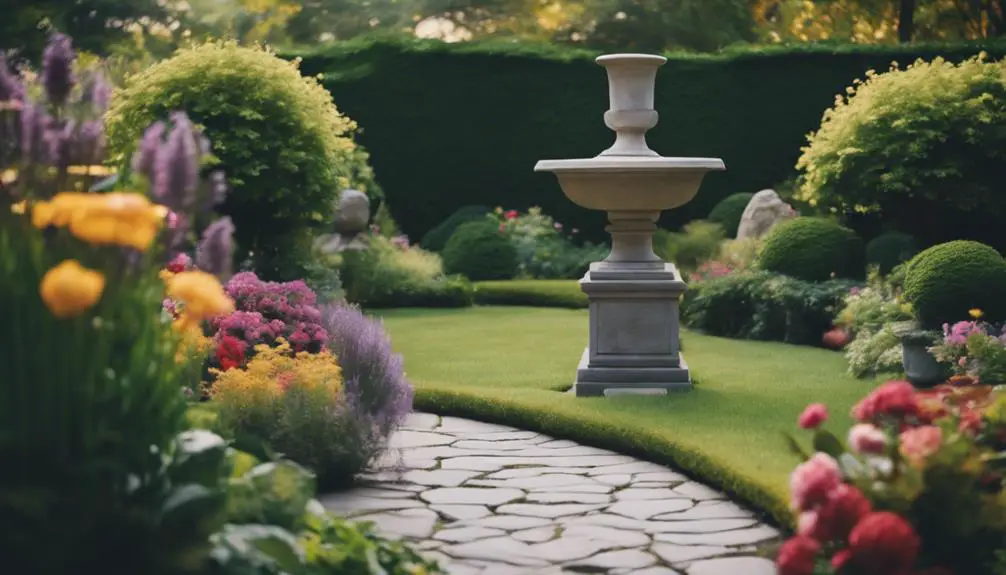
With your yard's conditions thoroughly assessed, you can now turn your attention to defining a landscape style that not only complements its unique characteristics but also reflects your personal taste and lifestyle.
This is where you get to infuse your personality into the design, creating a landscape that's truly yours.
Start by thinking about the overall aesthetic you want to achieve. Do you prefer clean lines and minimalism or whimsical curves and ornate details?
Consider your design preferences, from modern and sleek to rustic and natural. What colors and textures do you gravitate towards?
Your landscape personality should shine through in every element, from hardscapes to outdoor furniture.
Think about how you want to use your outdoor space – will it be for relaxation, entertainment, or play?
Choosing the Right Plants

Your plant palette is the canvas on which your landscape style comes alive, and selecting the right plants is crucial to creating a harmonious and thriving outdoor space that reflects your unique personality.
When choosing plants, consider your local climate and Plant Hardiness zone to guarantee they'll thrive in your environment.
You'll also want to think about the overall aesthetic you're aiming for – do you want a lush, tropical vibe or a more minimalist, modern look? This will help you narrow down your plant selection and create a cohesive Garden Theme.
Consider factors like sunlight, soil type, and moisture levels when selecting plants, and don't be afraid to mix and match different textures, colors, and shapes to add visual interest.
Remember, your plant palette is a reflection of your personal style, so don't be afraid to get creative and try new things!
Selecting Hardscaping Materials
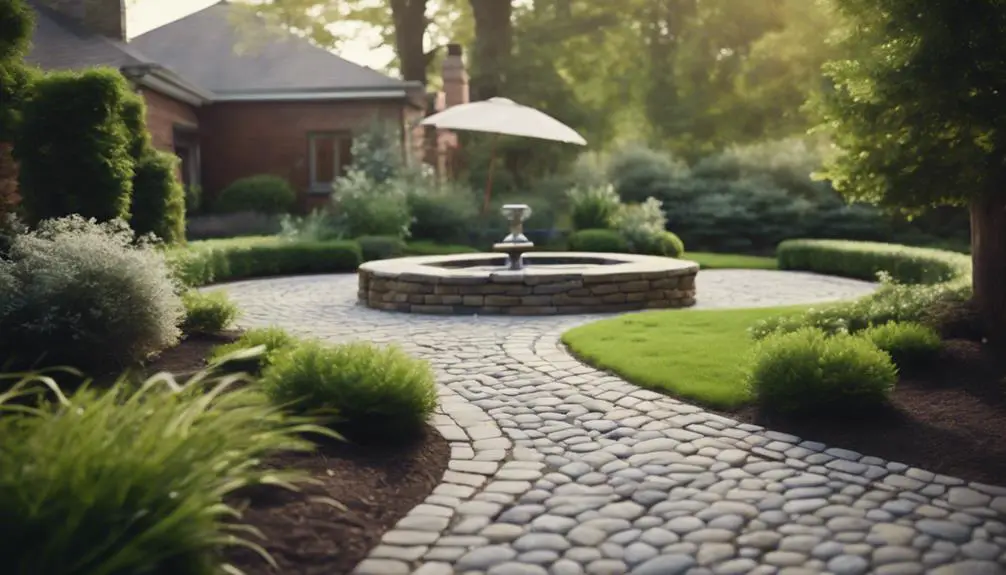
You'll need to balance your plant palette with hardscaping materials that not only complement your outdoor space's aesthetic but also withstand the elements and heavy foot traffic.
As you consider different materials, prioritize material durability to guarantee your hardscapes remain intact for years to come. Assess your climate, soil type, and level of maintenance to determine the most suitable materials for your front yard.
For instance, if you live in an area with high rainfall, consider permeable pavers that allow water to drain through, reducing erosion and runoff.
On the other hand, if you're looking for a low-maintenance option, composite decking or recycled plastic materials might be the way to go.
Don't forget to factor in your personal preference for texture, color, and style.
Do you prefer the rustic charm of natural stone or the sleek modernity of concrete?
Incorporating Lighting Features

By strategically incorporating lighting features into your front yard landscape, you can enhance curb appeal, create ambiance, and guarantee safety after dark.
A well-designed lighting scheme can transform your outdoor space, making it inviting and functional long after the sun sets.
To achieve this, consider installing Moonlight Pathways, which use subtle, low-level lighting to guide visitors through your yard. This design element not only adds visual interest but also provides a sense of security.
To create an Ambient Glow, use a combination of uplighting and downlighting techniques.
Uplighting highlights specific landscape features, such as trees or architectural elements, while downlighting provides overall illumination.
You can also incorporate pathway lighting, spotlights, and lanterns to create a layered lighting effect.
When selecting lighting fixtures, opt for energy-efficient options and consider using smart lighting systems that can be controlled remotely.
Designing for Drainage
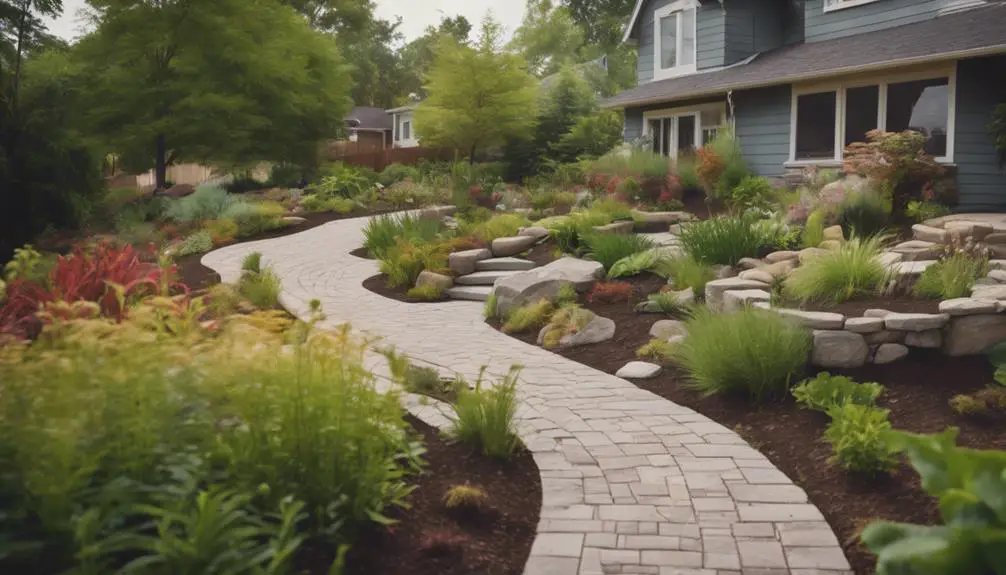
As you design your front yard landscape, you'll need to ponder how water flows through your property to prevent waterlogged areas and erosion.
You'll want to assess the slope and grading of your yard, as well as the natural water flow patterns, to guarantee that rainwater and irrigation don't accumulate in unwanted areas.
Additionally, you'll need to take into account the type of soil you have, as it plays a critical role in how well your yard drains excess water.
Slope and Grading Matters
When designing your front yard landscape, incorporating a thoughtful slope and grading plan is crucial to redirect rainwater and prevent water accumulation that can lead to erosion, foundation damage, or other issues.
You'll want to ponder slope solutions that take into account the natural terrain of your yard, as well as any existing drainage patterns. For instance, if your yard slopes towards your home, you'll need to implement a grading plan that redirects water away from the foundation.
Grading basics include ensuring your yard slopes at a rate of at least 1-2% away from your home. This will help prevent water from pooling around the foundation.
You can also use retaining walls or terracing to create level areas and control water flow. Additionally, ponder incorporating rain gardens or bioswales to capture and filter rainwater.
Water Flow Patterns
To effectively design your front yard landscape for drainage, you'll need to identify the natural water flow patterns in your yard, taking into account the topography, soil type, and existing vegetation.
By understanding how water flows through your yard, you can create a design that works with nature, rather than against it.
Observe how rainwater flows across your property, noting the water flow directions and any areas where water tends to collect.
This will help you identify potential drainage issues and opportunities for rainwater harvesting.
Consider installing a rain garden or bioswale to capture and filter rainwater, reducing stormwater runoff and creating a beautiful landscape feature.
You can also use permeable pavers or gravel to allow water to percolate through the soil, reducing surface runoff.
Soil Type Importance
Your soil type plays a pivotal role in determining how water flows through your yard, and understanding its characteristics is essential for designing a front yard landscape that effectively manages drainage.
When it comes to soil, you can't just focus on its composition; you need to weigh its structure as well. Soil composition refers to the mixture of mineral and organic particles, air, water, and living organisms that make up your soil.
On the other hand, soil structure refers to the arrangement of these particles and the resulting pore spaces that affect water flow. If your soil has a high sand content, for instance, it will drain quickly, but may not retain moisture well. Clay soils, on the other hand, retain moisture but can be prone to waterlogging.
By understanding your soil's unique characteristics, you can design a landscape that works with – not against – its natural tendencies. This might involve creating berms or swales to slow down water flow, or incorporating plants that thrive in your specific soil type.
Creating a Focal Point

As you design your front yard landscape, you'll want to create a focal point that draws the eye and adds visual appeal.
To do this, you'll need to incorporate visual interest elements, such as unique plants, ornamental features, or decorative accents, that create a sense of harmony and balance.
Visual Interest Elements
By incorporating visual interest elements, you can create a focal point in your front yard landscape that draws the eye and captivates attention.
Visual anchors, such as a statement piece of art or a decorative planter, can serve as a central point of focus. These anchors can be strategically placed to guide the viewer's eye through the landscape, creating a sense of visual flow.
Focal highlights, like vibrant flowers or ornate garden ornaments, can add an extra layer of visual interest to your design. By combining these elements, you can create a visually appealing focal point that adds depth and dimension to your front yard.
When selecting visual interest elements, consider the overall aesthetic you want to achieve. Do you want to create a bold, dramatic statement or a soft, serene atmosphere?
Choose elements that reflect your personal style and complement your landscape's unique features. Remember, the key is to create a sense of balance and harmony, so don't be afraid to experiment and adjust your design until it feels just right.
Key Focal Point Features
To create a striking focal point, anchor your design with a dominant feature that draws the eye, such as a show-stopping sculpture or a majestic tree.
This key feature will serve as the centerpiece of your front yard landscape, guiding visitors' attention and creating visual interest.
When selecting a focal point, consider the style and theme of your yard, as well as the surrounding architecture.
For instance, a modern sculpture can complement a contemporary home, while a vintage fountain might suit a traditional setting.
As you design your focal point, remember that balance is vital.
You want your key feature to stand out, but not overwhelm the surrounding landscape.
Consider the scale, color, and texture of your focal point in relation to the rest of your yard.
To create maximum impact, place your focal point at a strategic location, such as near the entrance or at the terminus of a pathway.
By incorporating a striking focal point, you'll create a visually appealing landscape that invites exploration and admiration.
Effective focal pointers can elevate your front yard from ordinary to extraordinary, making it a true showstopper.
Balancing Texture and Color
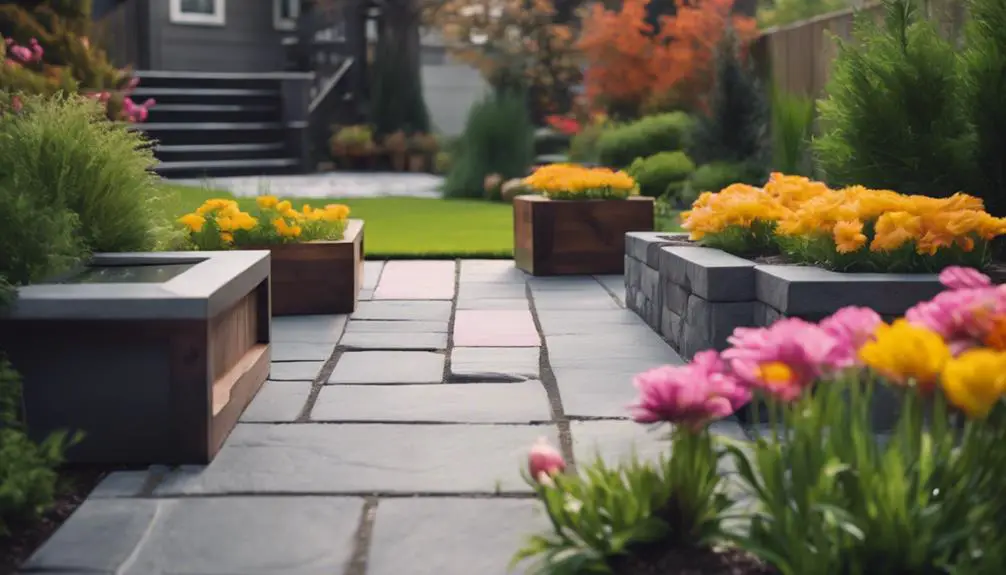
Your front yard landscape's visual appeal hinges on striking a balance between texture and color, a delicate harmony that can elevate or undermine the entire aesthetic.
To achieve visual contrast, you'll want to combine plants and materials with varying textures, such as smooth stones, rough-hewn wood, and soft foliage. This mix of tactile sensations will engage visitors and create depth in your design.
When selecting plants, consider their seasonal harmony. Choose a palette that shifts and evolves throughout the year, with blooms, foliage, and branching patterns that complement each other.
For example, pair spring-blooming flowers with summer foliage, and autumn leaf color with winter berries. This thoughtful approach will guarantee your landscape remains visually appealing year-round.
Considering Climate and Maintenance
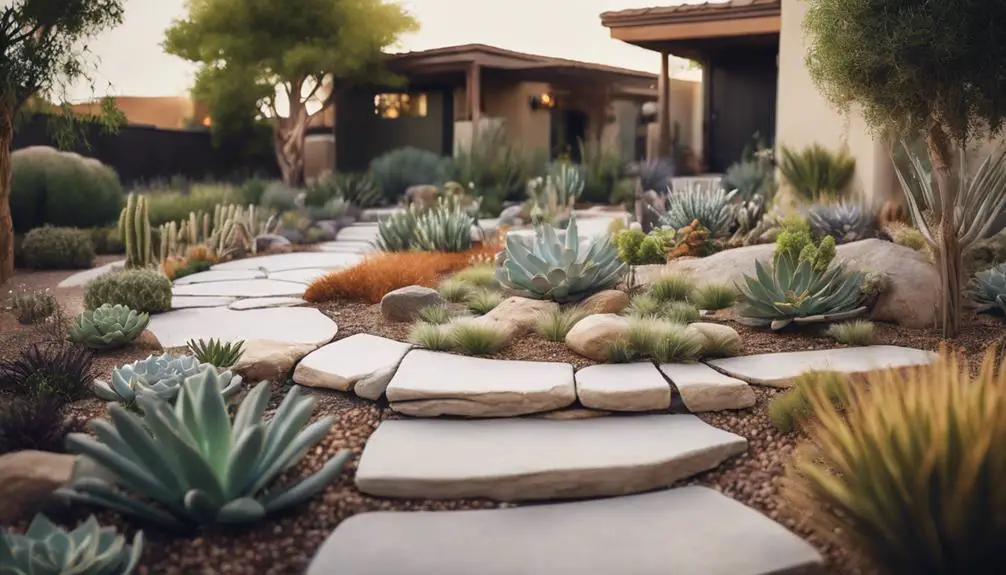
As you've carefully balanced texture and color in your front yard landscape, you'll now need to ponder the local climate and maintenance requirements that will impact your design's longevity and overall success.
Understanding your climate zone is vital, as it will influence the types of plants that thrive in your area. Be aware of weather extremes, such as intense sunlight, heavy rainfall, or frost, which can affect your landscape's performance.
Consider the amount of sunlight your yard receives, as well as the soil type and moisture levels, to choose plants that are well-suited to your environment.
Don't forget to research local regulations and homeowners' association rules regarding lawn maintenance, irrigation, and fertilizer use.
Adding Outdoor Living Spaces

Now that you've carefully considered the climate and maintenance requirements, turn your attention to incorporating functional outdoor living spaces that seamlessly blend with your front yard landscape, creating an inviting atmosphere that beckons relaxation and entertainment.
You can achieve this by designing outdoor rooms that flow effortlessly from your indoor living areas. Consider creating a cozy reading nook or a spacious entertainment area, perfect for hosting friends and family.
Think about how you'll use these spaces and what features you'll need to make them functional.
If you plan to host outdoor dinners, you may want to incorporate a built-in grill or outdoor kitchen. If you envision lazy afternoons, consider adding a pergola or gazebo to provide shade and shelter.
Remember to balance these features with lush greenery and vibrant plant life, ensuring your outdoor living spaces feel organic and connected to the surrounding landscape.
Using Mulch and Groundcovers

Mulch and groundcovers become the unsung heroes of your front yard landscape, working tirelessly to suppress weeds, retain moisture, and add a pop of color and texture to the overall aesthetic.
By incorporating mulch, you'll reap numerous benefits, including reduced soil erosion, improved soil health, and a decrease in lawn mowing frequency.
You'll also enjoy the visual appeal of a well-mulched area, as it creates a clean and polished look.
When it comes to groundcovers, you have a variety of options to choose from, each with its unique characteristics and benefits.
Creeping thyme, for instance, is an excellent choice for areas with high foot traffic, as it can withstand heavy use.
If you're looking for a low-maintenance option, consider sedum or succulent groundcovers, which require minimal watering and care.
Whatever groundcover you choose, it'll help to suppress weeds, reduce soil compaction, and add a touch of elegance to your front yard landscape.
Incorporating Water Features
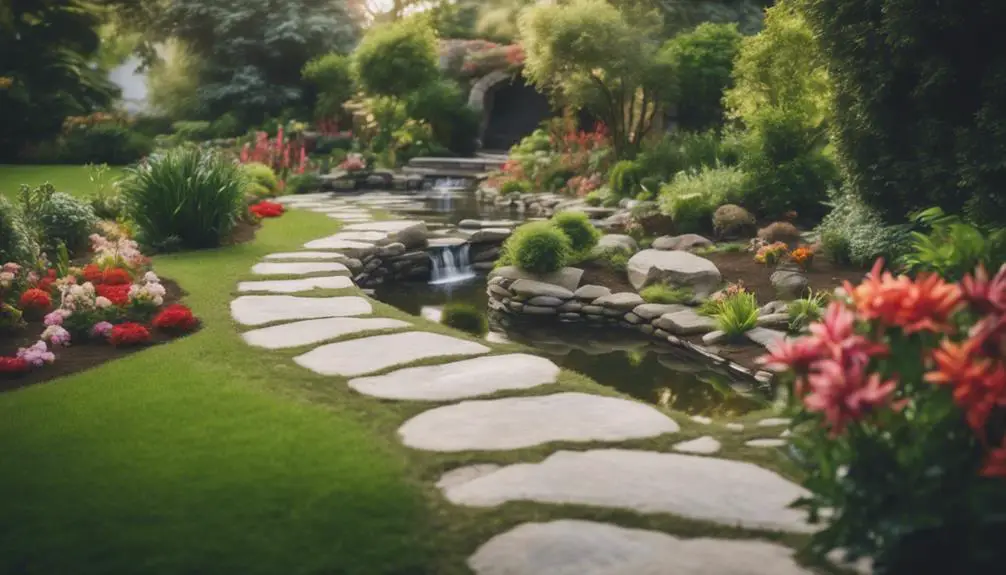
By incorporating water features, such as small ponds, fountains, or birdbaths, into your front yard landscape, you can create a visually appealing and calming oasis that not only adds aesthetic value but also attracts wildlife and helps to mask unwanted sounds.
Water fountains, for instance, can be a stunning addition to your yard, providing a soothing background noise and creating a sense of serenity. You can choose from a variety of styles, from modern and sleek to traditional and ornate, to match your landscape's theme.
Ponds features, on the other hand, can add a touch of natural elegance to your yard. You can incorporate aquatic plants, such as water lilies or cattails, to create a thriving ecosystem that attracts birds, butterflies, and other wildlife.
Birdbaths, too, can be a lovely addition, providing a source of water for your feathered friends and adding visual interest to your landscape. By thoughtfully incorporating these water features, you can create a unique and enchanting outdoor space that's both functional and beautiful.
Budgeting for Your Design

As you begin to bring your front yard landscape design to life, this is crucial to establish a clear budget to guide your decisions.
You'll need to set a realistic budget goal, allocate costs to specific design elements, and prioritize your must-haves versus nice-to-haves.
Setting a Budget Goal
You'll need to determine how much you're willing to invest in your front yard landscape design, considering factors like materials, labor, and potential long-term savings.
This initial budgeting step is vital, as it sets the foundation for your entire project.
To establish a realistic budget goal, prioritize your financial priorities. Ask yourself: What're my must-haves, nice-to-haves, and nice-but-not-necessary features?
Be honest about your budget constraints, and allocate your resources accordingly. Consider the costs of hiring professionals, such as landscape architects or contractors, as well as the expenses of materials, equipment, and permits.
Don't forget to factor in ongoing maintenance and upkeep costs, which can add up over time.
By setting a clear budget goal, you'll avoid overspending and guarantee that your design meets your needs and expectations.
A well-planned budget will also help you make informed decisions throughout the design process, guaranteeing a beautiful and functional front yard landscape that fits your lifestyle and wallet.
Allocating Design Costs
Now that you've set a realistic budget goal, it's time to allocate your design costs, prioritizing where to invest your money to achieve the desired look and functionality for your front yard landscape.
A well-planned cost breakdown is vital to guarantee you're getting the most out of your budget. Start by categorizing your expenses into must-haves, nice-to-haves, and luxury items. This will help you allocate your budget effectively, focusing on the essential elements that will have the greatest impact.
When it comes to budget allocation, consider the 60-30-10 rule: 60% for essential elements like turf, plants, and hardscapes, 30% for mid-range items like outdoor lighting and furniture, and 10% for luxury features like water features or sculptures.
Be flexible, and adjust the ratio based on your specific needs and priorities. Remember to also factor in contingencies for unexpected expenses.
Prioritizing Landscape Elements
By categorizing your front yard landscape elements into must-haves, nice-to-haves, and luxury items, you can pinpoint where to allocate your budget to achieve the desired aesthetic and functionality.
This element hierarchy helps you prioritize your design constraints, ensuring you don't overspend on non-essential features.
Must-haves are the fundamental elements that provide structural integrity, such as a functional driveway, walkway, or patio.
Nice-to-haves are features that enhance the landscape's visual appeal, like ornamental plants or outdoor lighting.
Luxury items, like a water feature or outdoor kitchen, are the icing on the cake.
Frequently Asked Questions
How Do I Handle Neighbors Who Dislike My Landscape Design Choices?
When dealing with disapproving neighbors, you'll set boundaries by politely listening to their concerns, then firmly asserting your design choices. Employ compromise strategies like incorporating their feedback or adding screening elements to minimize visual impact.
Can I Landscape My Yard if I Have a Septic System Underground?
When working around a septic system, you'll prioritize Septic safety by identifying System placement and avoiding plantings that compromise the drainfield; then, you'll creatively design a landscape that coexists harmoniously with this underground infrastructure.
Are There Any HOA Rules I Need to Follow for Front Yard Landscaping?
You'll need to review your community's covenants, conditions, and restrictions (CC&Rs) to verify compliance with HOA rules, obtaining architectural approval before starting your project to avoid costly revisions or potential fines.
How Often Should I Update or Change My Front Yard Landscape Design?
You'll want to refresh your outdoor space with a seasonal update every 2-3 years to reflect your evolving personal style, ensuring your exterior mirrors your interior flair, and keeping your curb appeal fresh and dynamic.
Can I DIY My Front Yard Landscape Design or Do I Need a Pro?
You can DIY your landscape design using design software and landscape templates, but if you're not tech-savvy or lack experience, consider hiring a pro to guarantee a cohesive, functional, and aesthetically pleasing outdoor space that boosts your home's curb appeal.
Conclusion
You've carefully assessed your yard's conditions, defined your landscape style, and chosen the right plants, hardscaping materials, and lighting features.
You've incorporated outdoor living spaces, mulch, and groundcovers, and maybe even added a water feature.
Now, it's time to bring it all together.
With a clear vision and a solid plan, you're ready to transform your front yard into a stunning landscape that reflects your personal style and meets your functional needs.


